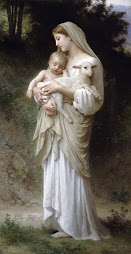How will I be a reflective builder of community who continually evaluates the effects of
his/her actions on others and who actively seeks out opportunities to grow
professionally?
Reflection
is a prerequisite for a well-examined life, and thus has immense benefits for
all persons and especially for teachers. I already engage in personal
reflection frequently by keeping a journal, but professionally I should expect
to also use reflection in order to judge my performance as a teacher. If a
class went well I should reflect on why it went well, how students were able to
succeed and think ahead to how I might repeat the level of success my class
just experienced. If my class did not do well on an assignment or an activity,
I also should reflect on why the experiment did not succeed. I must be able to dissect
all the components which led to a failed lesson and prepare future lessons that
are planned to approach difficulties in a new way.
The
most important goal for my learning community is a love of music. Musicianship
comes second with repertoire a close third. Broken down, a love of music is my
personal goal for all of my students, but it is something I cannot teach. I can
only encourage it by teaching understanding, knowledge and realization of
music. My lessons will be structured with this goal in mind, and I when I
reflect on my teaching experiences I will evaluate them based on their
proximity to this goal. I will hold my students to a high standard for
performance and acquisition of knowledge, but I hold myself to an even higher
standard as their teacher.
Part
of reflection is takes place after a lesson has concluded, but a great deal of
it happens in the classroom. Being a “with-it” teacher means being aware of
everything going on in my classroom at any given moment, and if a lesson or
activity is not going well I need to flexible enough to analyze and assess the
situation on the go. At every moment of the lesson I need to be tuned in to how
well my students are doing and make accommodations, changing one aspect and
inserting another. I need to be walking among my students and asking them
questions at all times, paying attention to the subtle clues in the class
environment and in student behavior. By doing this, I can better tailor my
instruction to my students without having to waste any time.
One
of the best suggestions I have been given in my preparation as a teacher is
that I should choose a mentor teacher, or even several mentor teachers, and
continue to learn from them throughout my teaching career. I know that I learn
the most through dialogue, and I know that having a mentor teacher will constantly
inspire me to grow professionally into the kind of teacher I want to be. Technological
advancements are always changing and a good way to make sure that I am growing
professionally is to make sure that I am capable of using and implementing the
new resources in my classroom. I also intend to be very active in music conferences,
expand my certifications into new music educational methods. I hope someday to
go on and get my masters, perhaps even a doctorate, in choral conducting and I
will always take voice lessons, no matter where I am. If I involve myself in
the local opera company or professional choral group I will also continue to
grow as a professional music educator. I also want to be involved in music at
summer camps as well as give private lessons to students and the general
public.
Occasionally,
in order to settle myself and do a more formal reflection, I will go on a
retreat just to remove myself from pressure and stress, give myself time to
rest and meditate on my life. Silent retreats are especially good for major
life discernments. Having a good selection of literature to read and discuss in
groups with fellow teachers is also a tool I have used in the past to reflect
on my educational philosophy, and I intend to subscribe to educational and
musical journals. I have the great blessing of wise and caring friends in whom
I can confide my ideas. They help me reflect on my goals and experiences and
will tell me when something sounds ill-prepared or not thought through. Video
recording is also a marvelous way to witness my teaching through a completely
factual lens. I hope to bring my peers into my classroom so that they can help
me evaluate my teaching strategies and lend me their wisdom. Keeping a
professional reflection journal is also a wonderful way to articulate my
thoughts on paper and provide a written account to which I can refer for future
lesson planning.
I
am naturally a very passionate person, and I live by the motto that if anything
is worth doing it is worth doing well. Therefore, by my very disposition I
think my superiors and fellow teachers can be certain that if they give me a
job I will do it and I will carry it out with excellence. I am one to neither
procrastinate nor make excuses for a poorly done work, and if I do make mistakes
I am quick to ask forgiveness and try again. I do view music and teaching as
vocations. I believe that I am taking on a great responsibility by becoming a
music teacher, and I am committed to doing my very best.





